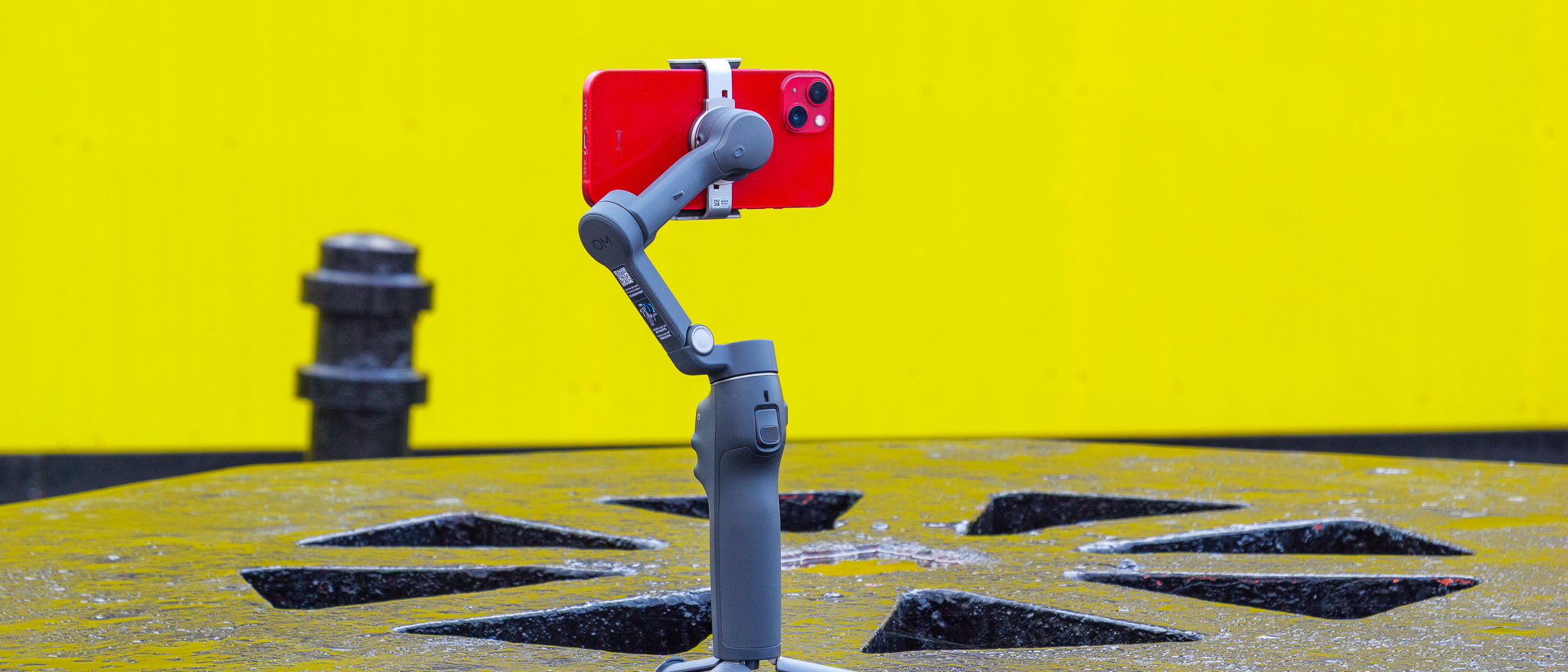TechRadar Verdict
With the Osmo Mobile 8, DJI has delivered a deftly worked evolution of the Osmo Mobile 7P that addresses its main shortcomings while adding more tracking capabilities – and all for the same accessible price. Unless you own a particularly large or bulky mobile, this is all the smartphone stabilizer you could want.
Pros
- +
DockKit, module, and app-based tracking
- +
360º horizontal tracking now supported
- +
Works seamlessly with DJI's wireless microphones
Cons
- -
No remote control
Why you can trust TechRadar
DJI Osmo Mobile 8: two-minute review
To my knowledge, the DJI Osmo Mobile 8 is the first smartphone stabilizer to come with three distinct types of subject tracking. Not only is it able to track faces, bodies, and other objects when the mounted phone is running the DJI Mimo app – it can also track using third-party apps, either through Apple DockKit compatibility or the new Multi-Functional Module, a tiny camera-equipped add-on that also includes a fill light.
To be clear, none of the above is new exactly – we've seen both DockKit-compatible tracking stabilizers and those that use modules to track before. What is new is having both options in a single device. It's a best-of-both-worlds approach, and one of the things that sets the Osmo Mobile 8 apart from its myriad competitors.
The other is the low price: it's just £135 or AU$219, which is slightly more affordable than contemporaries like the Hohem iSteady V3 Ultra (£169 / AU$299) and the Insta360 Flow 2 Pro (£144.99 / AU$289.99). You'll no doubt have noticed that I haven't included a US dollar price. That's because, like other recent DJI launches, it's not coming to American stores. At least not officially.


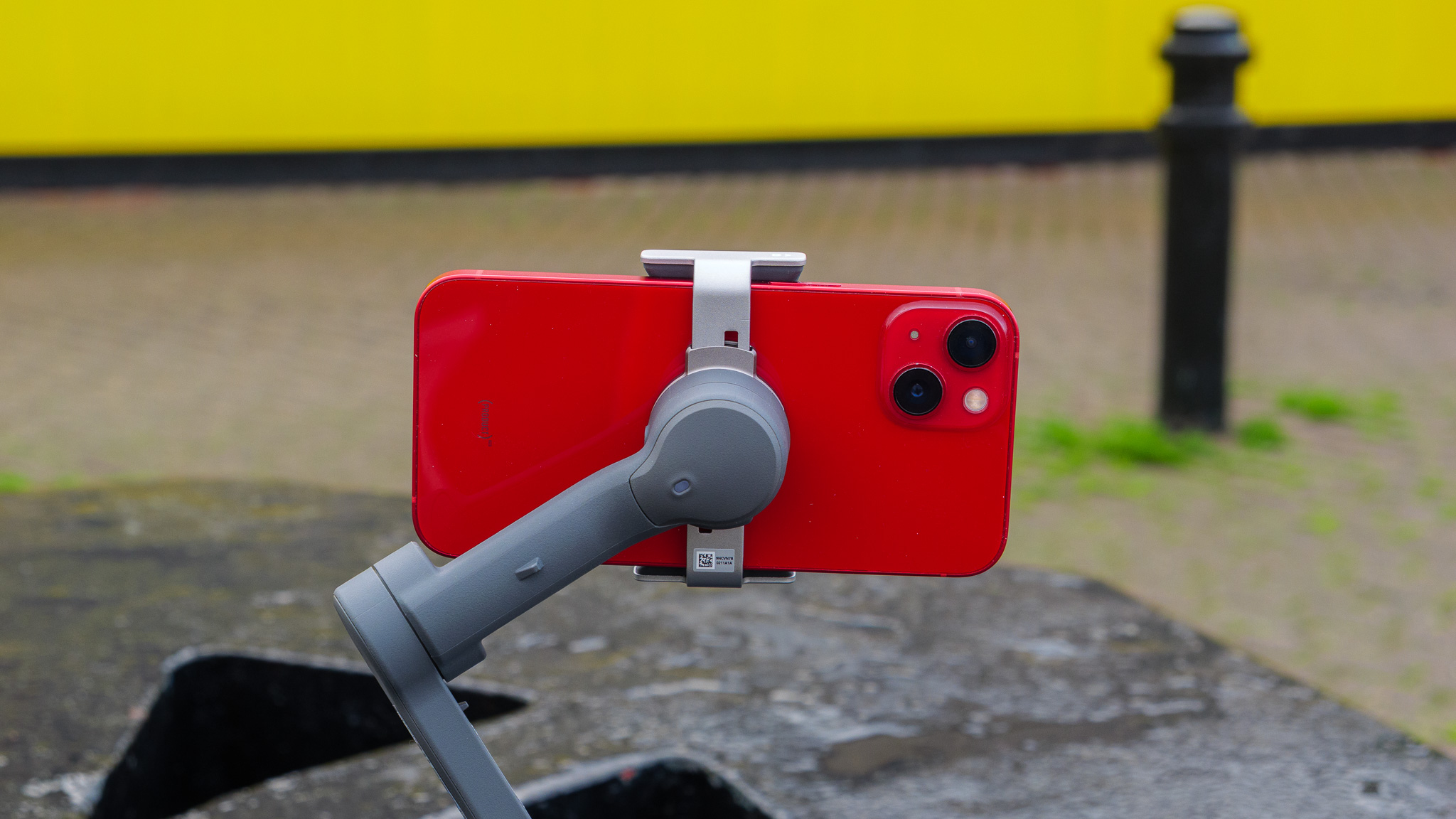
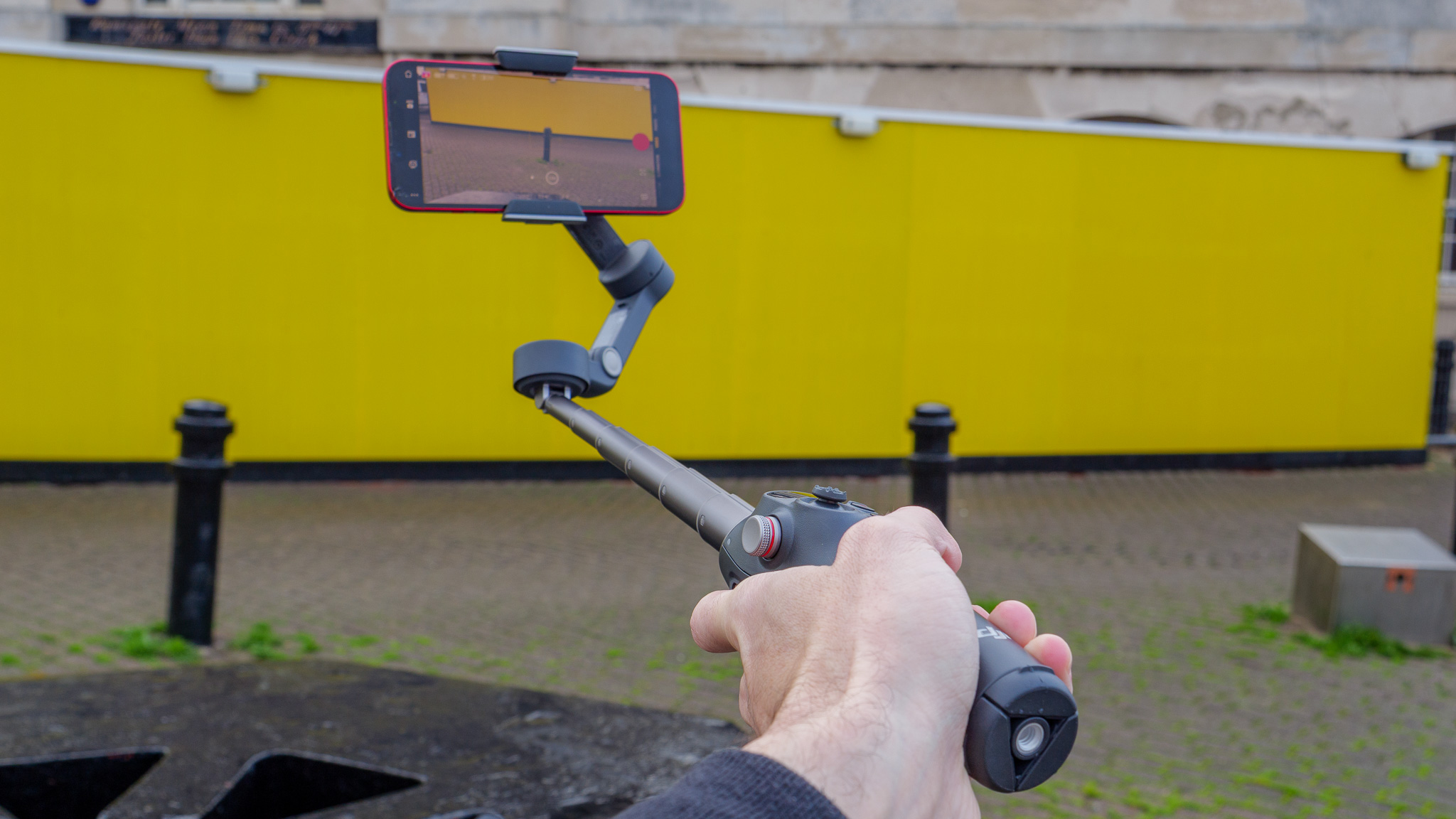
Design-wise, it's pretty much the same as every other compact smartphone stabilizer, which is no bad thing in my book.
It folds down to near pocket-size – you'll get it in a coat pocket, maybe, but not your jeans – and powers on automatically when the gimbal is pulled out. Your smartphone is mounted via a magnetic clamp, which can accommodate a good range of device sizes and weights (if not quite as wide a range as the Hohem iSteady V3) and is easier to deploy than a clamp that's permanently fixed to the gimbal arm. The arm also includes a USB-C output, allowing you to charge your phone from the stabilizer's own battery.
The Osmo Mobile 8's handle includes a pull-out extension rod to add up to 21.5cm / 8.5 inches of extra distance between the user and the phone (which I found valuable for self-shooting, as it allowed me to get more into the frame), plus a plastic mini-tripod for setting up the stabilizer on the floor or a flat surface for hands-free use. There's also a standard tripod thread on the bottom of the handle for fixing it to third-party mounts.

The handle felt comfortable in my hand, and I found the controls simple and ergonomically sound; I was able to access them all with one hand, including the zoom/focus wheel. A trigger on the front offers various functions, including the ability to rotate the phone 180º or turn tracking on and off. There are dedicated buttons to stop/start recording and flip between front and rear-facing cameras on your phone, plus a thumbstick for manual gimbal arm control and a mode button to cycle through the four follow modes.
Sign up for breaking news, reviews, opinion, top tech deals, and more.
These are PTF (pan and tilt follow), PF (pan follow), FPV (pan, tilt, and roll follow), and SpinShot (a special mode that rotates the phone through almost 360º for bizarre shots). Basically, it's exactly what I'd expect from a smartphone stabilizer, and I can't see how any content creator would need anything more from one, particularly given the improved tracking capabilities.
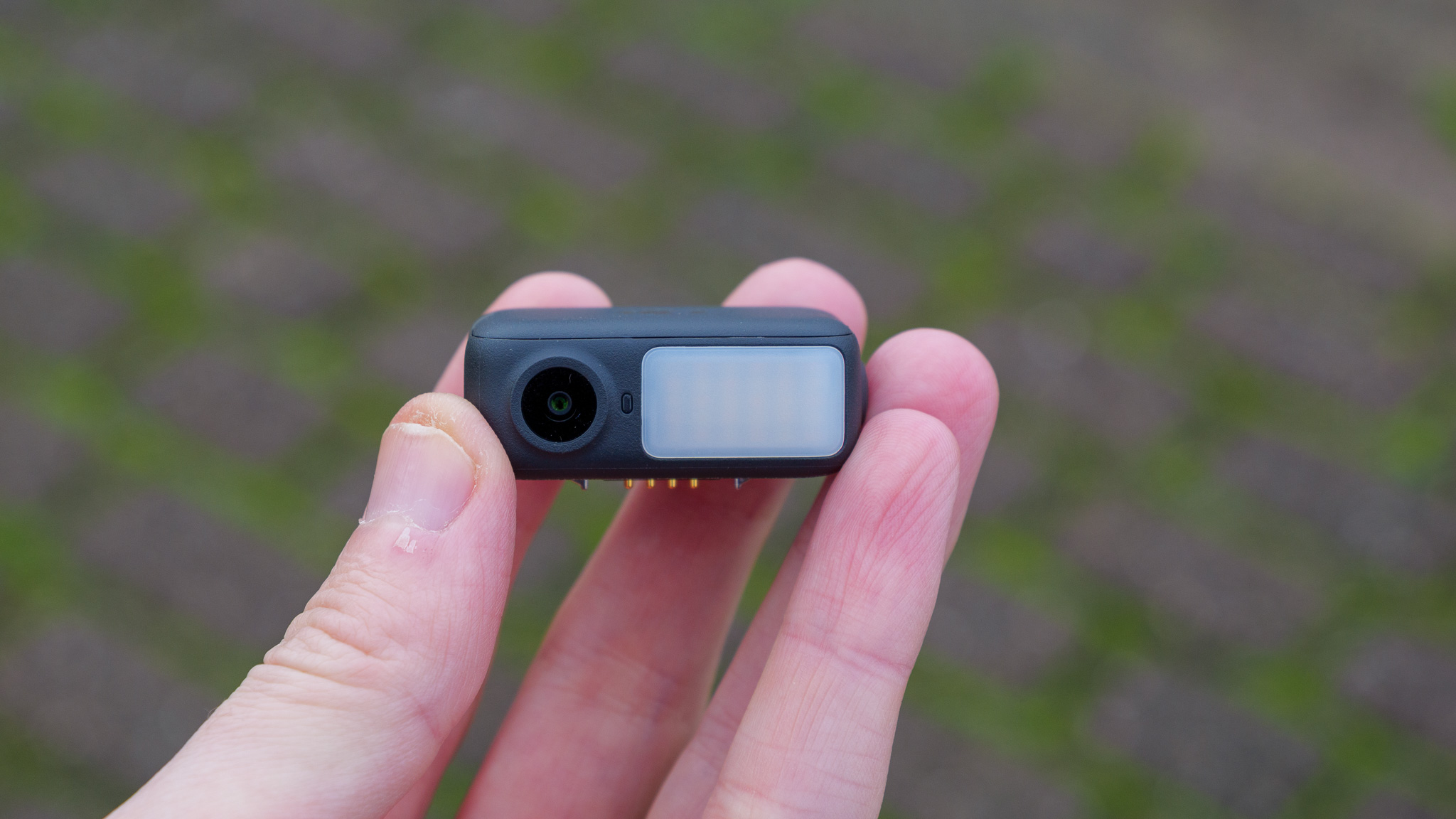
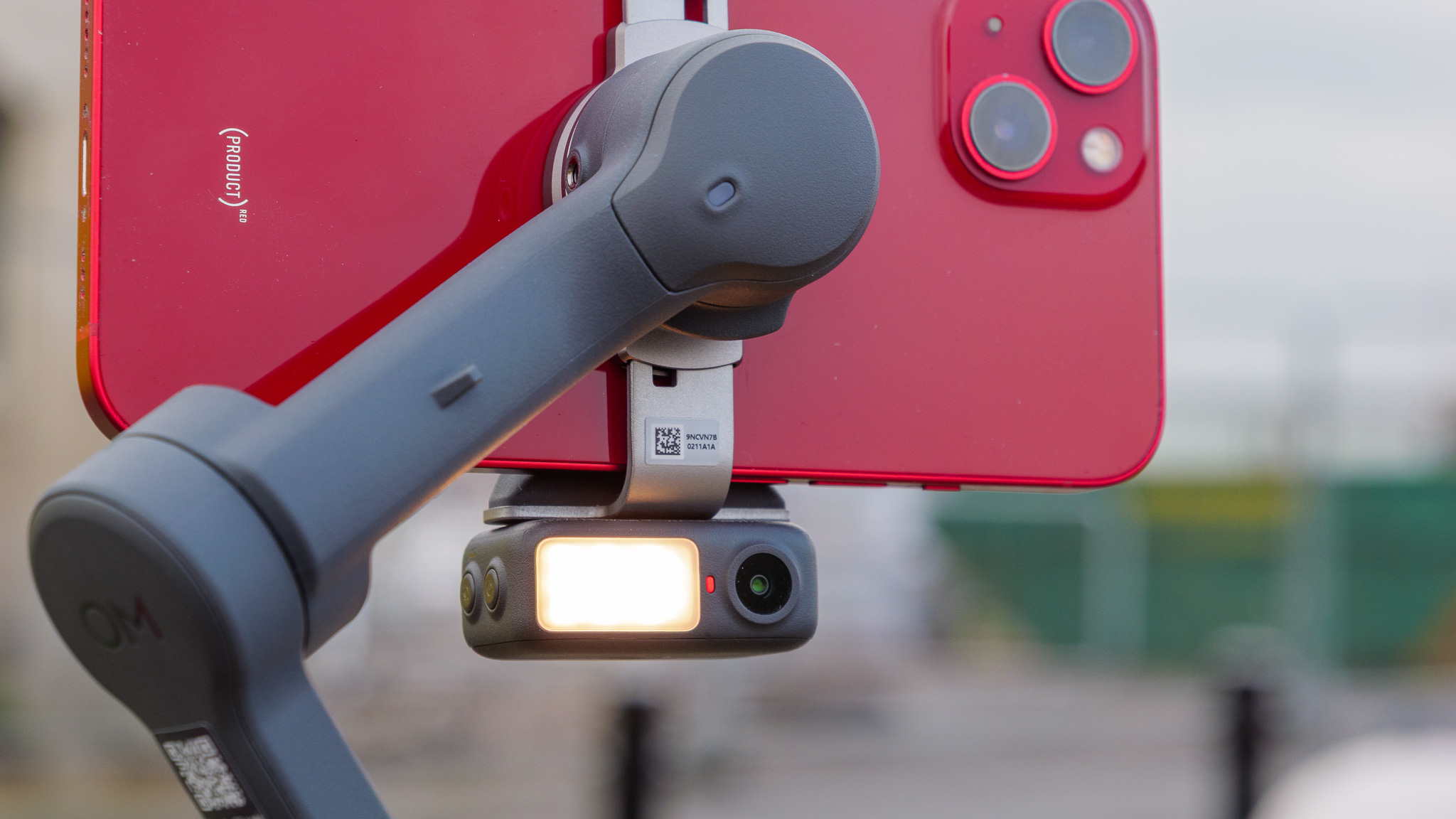

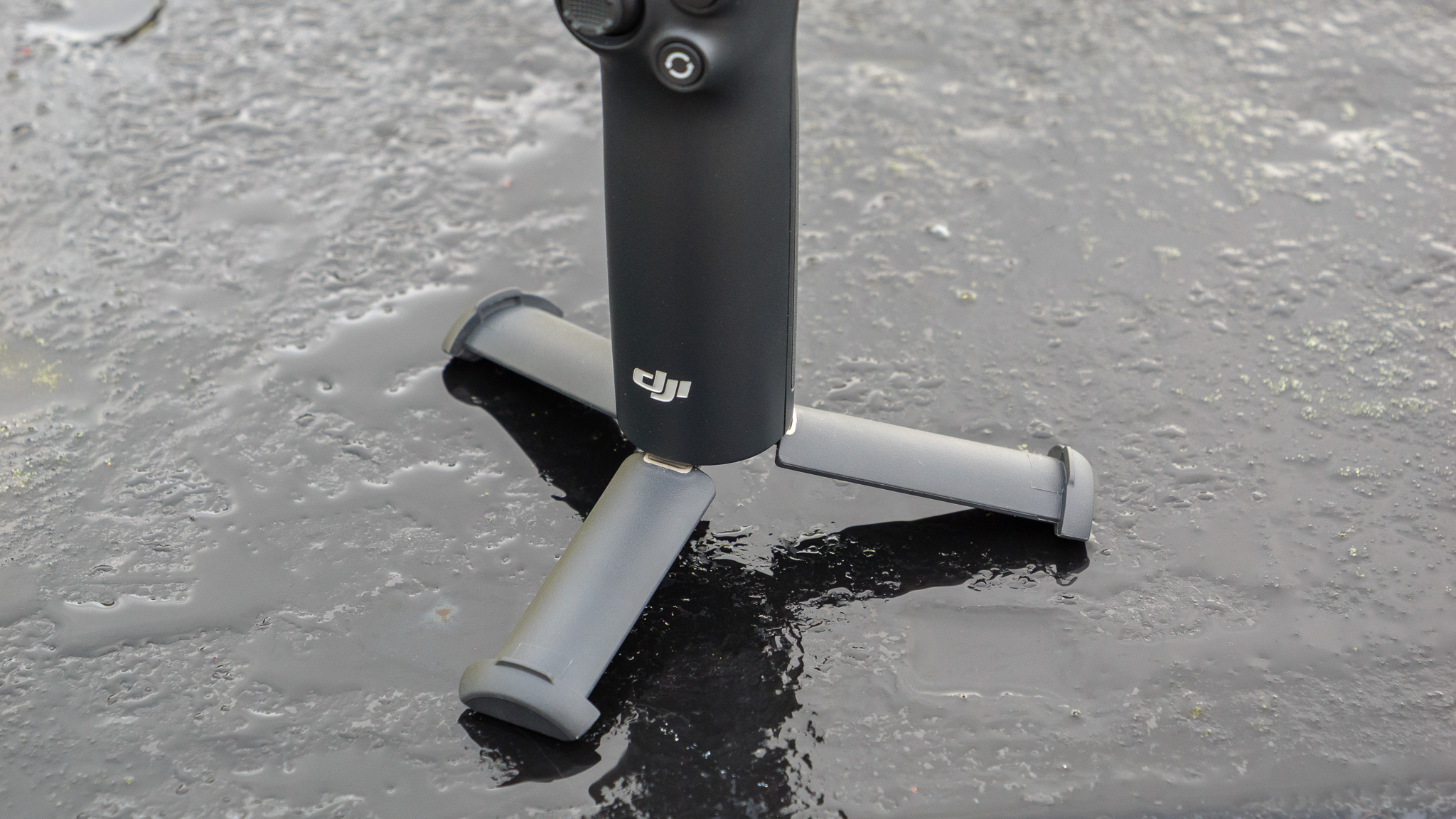
I've already mentioned the fact that the Osmo Mobile 8 has added DockKit tracking to the module-based or Mimo app-based tracking previously offered by the Osmo Mobile 7P. I should also point out that the Multifunctional Module now tracks dogs and cats as well as people, and that it can wirelessly connect to the DJI Mic Mini, Mic 2, and Mic 3, whereas the Osmo Mobile 7P's only worked with the Mic Mini. In fact, it can connect to two mics simultaneously.
Another upgrade over the Osmo Mobile 7P is 360º horizontal rotation, allowing the Osmo Mobile 8 to track a subject "infinitely" as they circle around it. This is something I've previously seen on rival gimbals, so it's good to see DJI keeping up with the competition.
Overall, the DJI Osmo Mobile 8 is yet another impressive, well-designed smartphone stabilizer that content creators looking to shoot smooth, stable footage should consider. With similar battery life and tracking performance to its rivals, I can't say it's worth ditching your existing Hohem or Insta360 stabilizer for, but if you're buying your first stabilizer and already own a DJI wireless mic, it makes a lot of sense to pick this up – particularly given its affordability.
DJI Osmo Mobile 8: price and availability
- Priced from £135 / AU$219
- Available in bundle with DJI Mic Mini
The DJI Osmo Mobile 8 was announced on November 5, 2025 and is available to order now worldwide – aside from in the US.
It's sold in a standard bundle including the stabilizer itself, a Multifunctional Module, a magnetic clamp, and a soft fabric carrying bag for £135 / AU$219, which I feel is a very good price considering the features and build quality.
It can also be purchased in a bundle with a single DJI Mic Mini transmitter for £165 / AU$274, which oddly doesn't represent a discount on the transmitter (it costs the same when bought separately).
DJI Osmo Mobile 8: specs
Dimensions: | 190 x 95 x 46mm (folded) |
Weight: | 370g / 13.1oz |
Compatible phone weight: | 170 to 300g / 6 to 10.6oz |
Compatible phone thickness: | 6.9 to 10mm |
Compatible phone width: | 67 to 84mm |
Connectivity: | Bluetooth 5.3, USB-C |
Battery life: | 4 hours (using tracking and fill light) / 10 hours (balanced and stationary) |
Should I buy the DJI Osmo Mobile 8?

Buy it if...
You own a DJI Mic Mini, Mic 2 or Mic 3 already
With built-in support for the OsmoAudio ecosystem, the OM 8 works brilliant with DJI's wireless mics – aside from the first-gen model.
You want an affordable, compact gimbal
The Osmo Mobile 8 is smaller and cheaper than the Hohem iSteady V3, so if you want to travel light and save a little cash, it's the best option around.
Don't buy it if...
You own a heavy phone
If your smartphone weighs over 300g or is more than 10mm thick, the Osmo Mobile 8 can't grip it.
You want to control gimbal movements from a distance
Aside from basic gesture controls, there's no way to remotely control the Osmo Mobile 8.
Hohem iSteady V3 Ultra review: Also consider
Insta360 Flow 2 Pro
The Flow 2 Pro’s big party trick is native support for subject tracking in hundreds of third-party iPhone camera apps, plus an included LED fill light. With no tracking module, Android users are left out in the cold, however, and trackable subjects are limited to people and pets.
Read our in-depth Insta360 Flow 2 Pro review
Hohem iSteady V3 Ultra
A little pricier than the Osmo Mobile 8, Hohem's stabilizer offers excellent module-based tracking plus a touchscreen-equipped remote control unit. It doesn't have a quick-release mount option, but it can grip heavier, larger handsets than the Osmo Mobile 8.
Read our in-depth Hohem iSteady V3 Ultra review
How I tested the DJI Osmo Mobile 8
- One week of use
- Tested with an iPhone 13
- Used for B-roll and vlog-style footage
I tested the DJI Osmo Mobile 8 for several days, using it both handheld and set up on its built-in mini tripod. It was used with my Apple iPhone 13's front-facing and rear cameras, both indoors and outdoors, and I recorded video using a range of apps (including the iPhone camera, DJI Mimo, and Instagram).
First reviewed November 2025

Sam has been writing about tech and digital culture for over 20 years, starting off in video games journalism before branching out into the wonderful worlds of consumer electronics, streaming entertainment and photography. Over the years he has written for Wired, Stuff, GQ, T3, Trusted Reviews and PC Zone, and now lives on the Kent coast in the UK – the ideal place for a camera reviewer to ply their trade.
You must confirm your public display name before commenting
Please logout and then login again, you will then be prompted to enter your display name.
